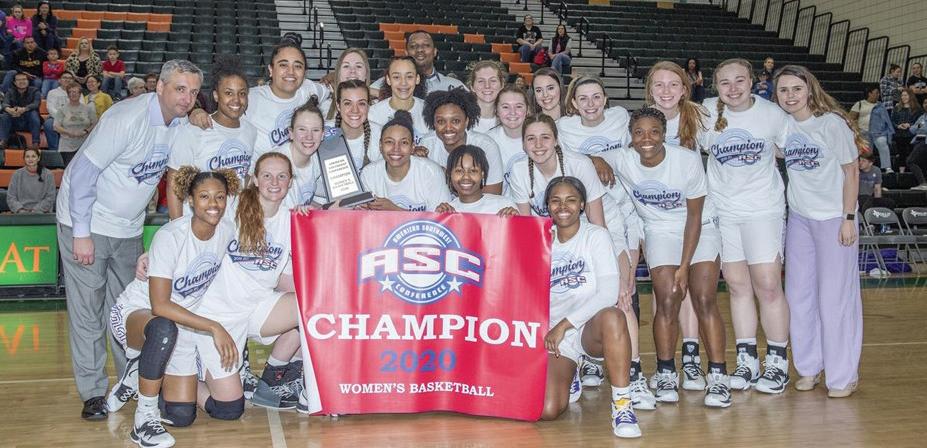
4 minute read
WHAT IS BEAUTY?
Beauty What is ?
Panelists explore why beauty is so difficult to define.
BY CHRISTI MAYS

Artist Michelle Westmark Wingard cringes when she sees her kids scrolling, scrolling, scrolling, as fast as their “It’s such a massive, broad question. In many lege of Christian Studies Professor Dr. Steve Oldham and Bethel University Professor Kenneth Steinbach, who explored the question, fingers will fly, past pictures on ways, calling something “What is Beauty?” as part of the Instagram. As much as she loves the speed and convenience of technology, she continuously ‘beautiful’ can be a way of assigning and UMHB series, C3 - Conversations in Christianity + Culture. In January, the three speakers encourages her daughters to look more closely at the images they’re whizzing past and see what’s assessing value.” — spent an hour with students discussing what beauty is in their lives, culture, and in relationships with there—see the beauty in them. Michelle Westmark Wingard God. The presentation was a com
“I want them to slow down pliment to the exhibit “The Beautienough to have the pleasure of ful” from the national organization looking—getting past the surface of what we can see quickly to be able to really take in the visual ideas that are present,” said Wingard, who is Christians in the Visual Arts, which was on display through February at the A CLOSER LOOK Junior graphic design major Blake Dupre and freshman a professor of art at Bethel University in Minneapolis, Baugh Center for the Visual Arts. international business and MN. “It’s in the slowness and the depth of looking where we can see value and beauty.” Wingard was one of three panelists, including Col“When it comes to the question, ‘What is beauty?’ I find myself looking at contrasts, looking marketing double major Ashleigh Thompson check out some of the artwork at “The Beautiful” display.


to the disruption of the ordinary, and looking for depth,” said Wingard. She followed with an example: “When the temperatures dip below zero in the Minnesota tundra, these amazing, feather-like ice crystal and ice particles grow on my windows at home. There’s something really lovely about the fact that this ‘thing’ happens—beauty in the midst of something that is pretty painful, like sub-zero temperatures and treacherous winters. There certainly is beauty to be found in contrast.”
She said beauty depends on whose idea of beauty we’re discussing. “It’s different from person to person, from culture to culture, from gender to gender,” she said. “It’s such a massive, broad question. In many ways, calling something ‘beautiful’ can be a way of assigning and assessing value.”
When the beauty value structure is assigned to people, that’s when she thinks it can be problematic and can do more harm than good. In this day and age, when so many place value in the outer beauty,
THE EYE OF THE BEHOLDER
Pictured above is a sampling of some of the artwork on display during “The Beautiful” exhibit, including a shadowy time-lapse video by speaker and artist Michelle Westmark Wingard. At right is a stylized photo Wingard took of the feather-like ice crystals that form on her windows in the winter



she tries to teach her daughters to live beyond the superficial and to live outside of this “false value structure.”
“I want them to be able to live outside of what the world might tell them that beauty is,” she said.
When it comes to defining “beauty,” Oldham said it’s a “challenging thing to do” since its concept is neither subjective nor objective.
“When you’re thinking about beauty, it’s a kind of encounter, or event, that happens between a
perceiver and an object,” he said. “That event is what we’re describing as beautiful.” Oldham said beauty is an important topic for students to discuss in our “success-focused and bottom-line oriented world.” “The experience of beauty—seeing it, recognizing it, and being challenged by it—is akin to what happens when we contemplate the Triune God of love and beauty, especially in worship.”
Even though artists often have a complicated relationship with beauty, Steinbach said that beauty isn’t found solely in the realm of art. Years ago, when he worked in construction and installed rafters on houses, at the end of the day, he would look up and “see that beautiful plane across the top of the house and think to himself, ‘holy smokes, how can you not love or appreciate that?’”


He also remembers seeing beauty in his ninth-grade geometry class. “In the span of my life, I would say that is the most powerful aesthetic experience I’ve had—sitting there, watching my geometry teacher draw all the angles and seeing the mathematics behind it,” he recalled. “I would turn to my friends and say, ‘Isn’t this cool!’ and they would look at me like I was insane. I was in love with the lines and the underlying structure beneath it all.”
Because beauty is so multi-faceted and different for every person, it is nearly impossible to create a hard definition, he said. “With beauty, there’s a certain harmony that happens—a certain intangible thing that works.”
Adding to the adage that “beauty is in the eye of the beholder,” Steinbach also says that, “beauty is everywhere.” We just have to look, and we will find it.





